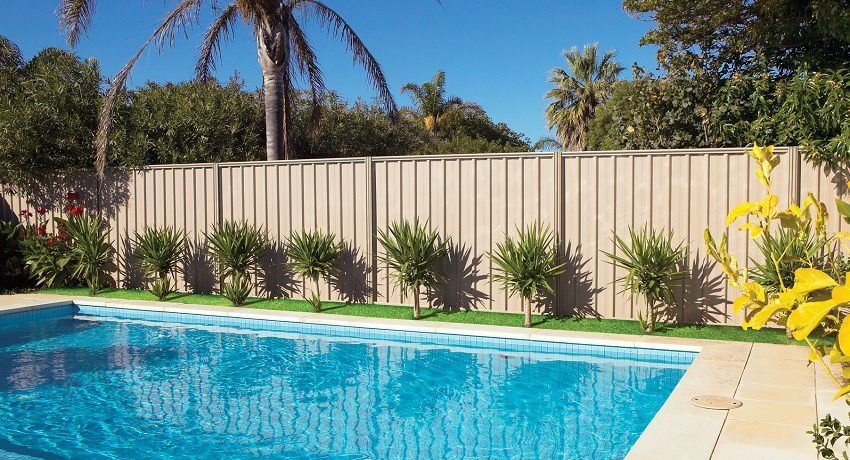Expanded clay as a multifunctional material is common in various areas of construction. Its main advantage is a high degree of sound and heat insulation. Therefore, it is often used as a heater. Expanded clay is widely used in agriculture and in industry. There are several types of material and packaging. How to choose and calculate the required amount, which is better: expanded clay in bags or in bulk? The answers to these questions are contained in this article.
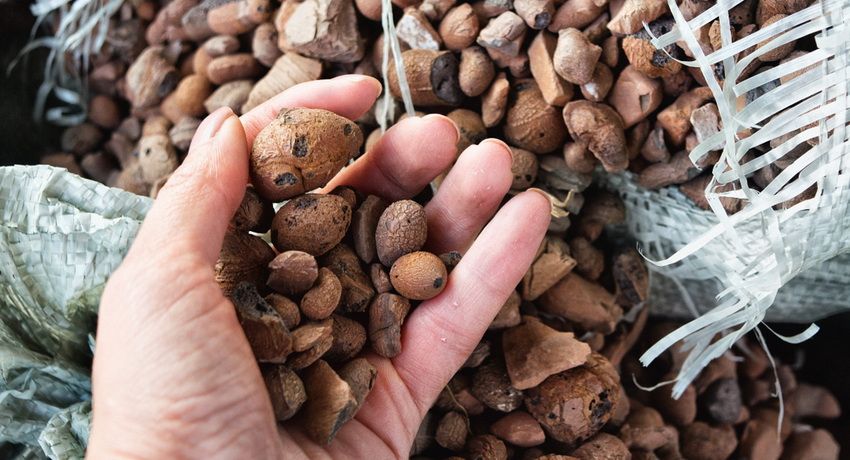
Expanded clay in bags: features and positive qualities of the material
Expanded clay has long been used in various areas of production due to a number of its positive qualities. This is a light, natural and eco-friendly material that is made from clay. It is practical to use and provides a high degree of noise insulation and heat saving in rooms. The coefficient of thermal conductivity of the material is quite low – 0.1-0.18 W / m · K.
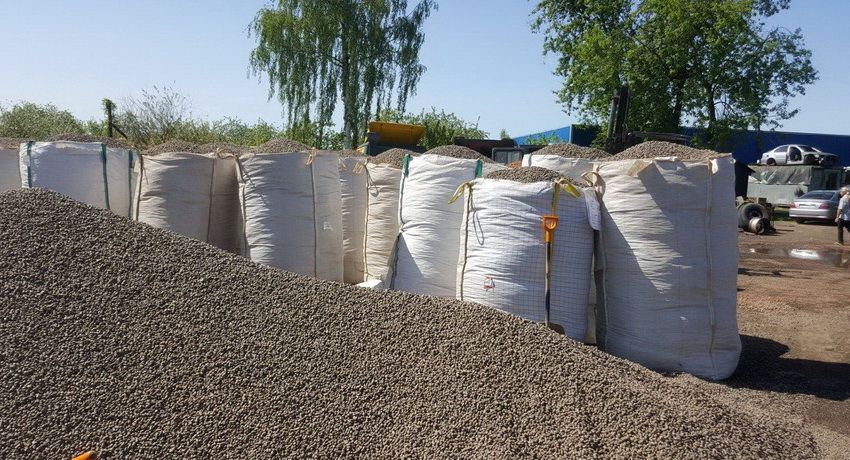
Additional advantages of expanded clay are its relative moisture resistance, frost and fire resistance, as well as biostability. In it the fungus is not formed and rodents do not get. Correctly selected proportions, quantity and compliance with the technology of installation guarantee the reliability of expanded clay screed and its long service life.
In large quantities, expanded clay is used as a drainage on the roads, to create a sidewalk and embankments in the garden. It’s pretty easy to work with him. However, before you buy expanded clay in bags or in bulk, you need to correctly calculate the required amount of material.
Expanded clay granules have a different shape. They are obtained from special grades of clay, characterized by a high degree of expansion in conditions of high temperatures. Due to these qualities, pores appear, which provide the thermal insulation properties of the material.
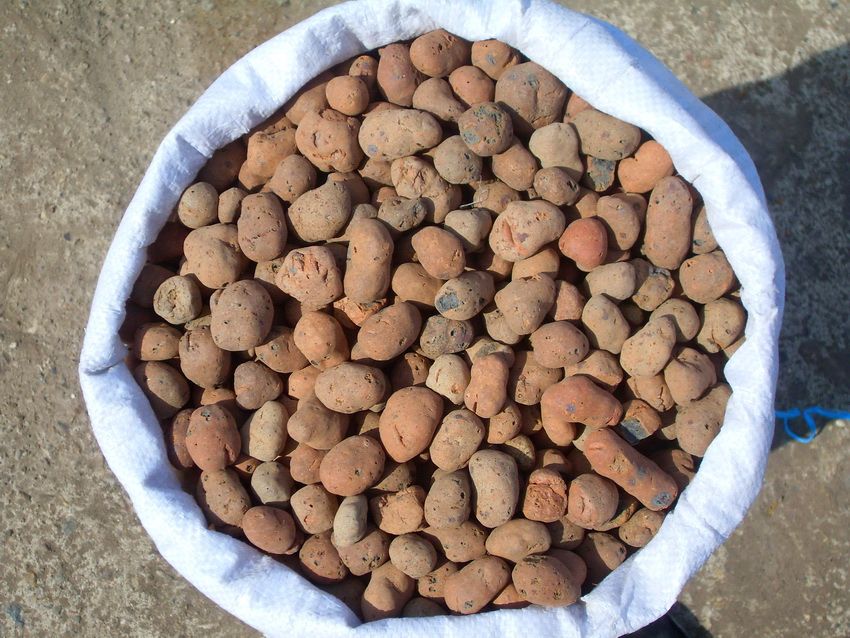
Let out expanded clay in bulk and in bags in three types. The sand has granules up to 5 mm in diameter. Gravel has a more rounded shape, and the grain size reaches 20 mm. Crushed stone – more angular material, its fraction – 20-40 mm.
Expanded clay has a low weight, and the density of the material determines its quality and area of use. It is this value that affects its quantity in a cubic meter and, therefore, the weight of the bag of expanded clay. This indicator depends on the fraction: the larger the granules, the lower the density of the material.
Helpful advice! When purchasing claydite, it is necessary to take into account the bulk density, which indicates the brand of material.
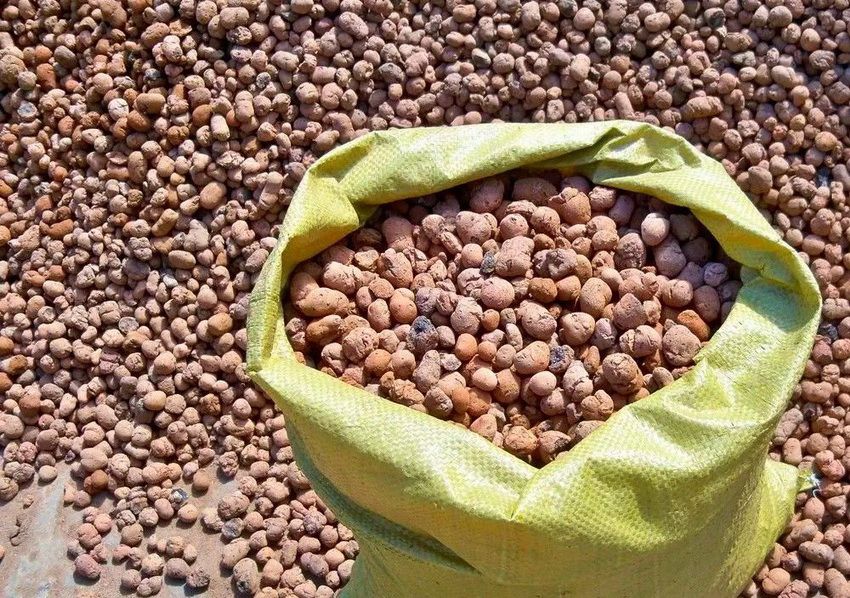
Production technology affects the density of the material. There are four ways to obtain this material:
- Dry. The simplest technology applied to homogeneous grades of clay without impurities. Humidity does not exceed 9%.
- Wet.
- Plastic. The most common method. Wet clay forms granules and sent to the furnace. Humidity of raw materials reaches 30%.
- Powder-plastic. It is similar to the previous method, but dry clay is used as a basis, which is crushed, and then moistened and subjected to temperature effects.
It is bulk density is the brand of expanded clay. It is denoted by the letter M with the corresponding number. For example, M300 indicates that 1 cube of expanded clay weighs from 251 to 300 kg. The lower the brand, the higher the insulating properties. Such material is best suited for insulation of ceilings and floors.
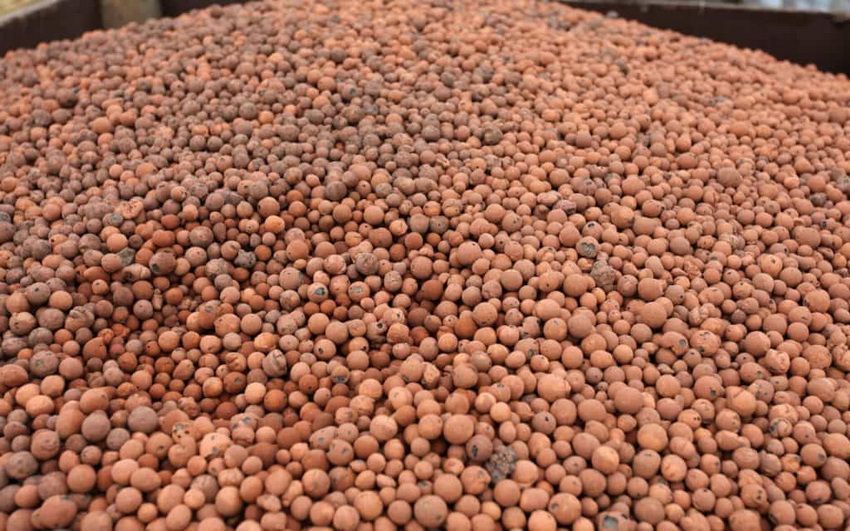
Claydite of lower grade (fraction 20-40) is used as a heat insulator in the bases and basements. It is widely used for landscape design. The material with a minimum density is used for wall insulation, communications and facades. The smallest expanded clay (with a fraction of up to 10 mm) is used in the preparation of expanded clay concrete for flooring.
The density of expanded clay is measured using the bulk method, as well as by calculating its volumetric weight. This characteristic indicates the true weight of sand, rubble or gravel – without taking into account the space in the middle of expanded clay granules. This feature underlies the difference between bulk density and true density, which almost always differ from each other. True density is a constant indicator, it can only be measured in special laboratories. The specific gravity varies with the grain fraction.
How much a cube of claydite weighs is clearly shown by the table:
| Type of expanded clay | Granule fraction, mm | The specific weight of the material, g / cm? |
| Sand | 0.1-5 | 0.55-0.6 |
| Fine gravel | 6-10 | 0.4-0.55 |
| Coarse gravel | 10-20 | 0.35-0.4 |
| Rubble | 20-40 | 0.2-0.35 |
The weight of sand can reach 600 kg per cubic meter, fine gravel – 450 kg, coarse – 400 kg. A cube of rubble will weigh at least up to 350 kg. The higher the density of expanded clay, the greater the weight of the material. These indicators are regulated by the existing GOST.
The exact specific weight of haydite is difficult to determine; one can only establish an average value, which is 400 kg / m? (0.4 g / cm?). This indicator is primarily affected by the size of the fraction. For example, a bag of expanded clay with a volume of one cube and a fraction of 10–20 weighs approximately 16.7 kg.
The network of building supermarkets offers a wide range of expanded clay. Goods can be purchased in bags or in bulk. In the absence of appropriate conditions for storage of material in bulk, it is better to choose products in packaging.
Helpful advice! When buying claydite, it should be noted that small granules have lower thermal conductivity, while having the highest bulk density.

Packing facilitates easy transportation, shipment and storage for storage. During transport, the material does not crumble, and its use will be waste-free.
Packaged substance is cleaner and has no foreign inclusions. You need to know that the cost of expanded clay per cube is slightly cheaper than in bags. But if wholesale purchase of several cubes is supposed, then it is more profitable to get expanded clay in bags with delivery.
The cost of the material, which is formed by the manufacturer, is influenced by the quality of raw materials, production methods, storage conditions and transport costs. Of considerable importance are the production capacity and the volume of output, energy consumption, labor resources and general trade in the market.

It is necessary to take into account many other factors that determine how much claydite costs in bags. The price is based on the following components:
- fraction of expanded clay. The main nuance is the following: the smaller the granule size, the more expensive the bag will cost. It depends on the weight and density ratios described above. It should be noted that the cost of sand is much higher than, for example, gravel or rubble;
- the presence and size of pores in the material. The heat-insulating properties of expanded clay depend on the porosity, that is, on the number of cells in the fracture of the granules. Accordingly, this factor directly affects the pricing;
- way of packing material. Bags of paper in several layers provide good protection of the product from contamination and moisture. In addition, in this form it is easier to carry out the loading, transportation, storage and accounting of products;
- packaging The process of distribution of material is a special, separate production cycle, which requires the involvement of additional workers and space. For this purpose, special equipment is acquired in the form of metering devices, special scales and a bulk bunker;
- weight of claydite bag. The cost is also affected by the number of kilograms of claydite in the bag. Packing 25 kg will cost more than 50 kg bags with the same material;
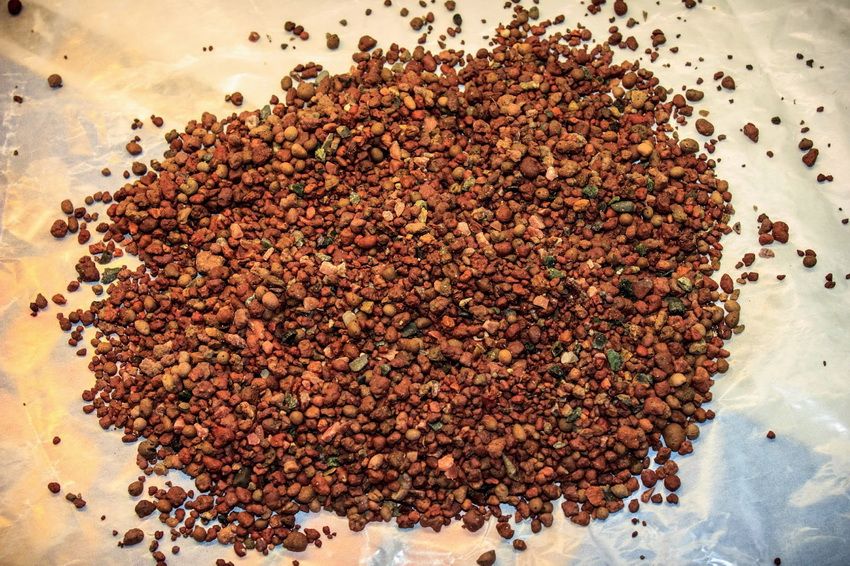
- total purchase. Large lots with a significant number of bags will cost less. Most suppliers immediately offer the price of wholesale and retail;
- payment method. Sometimes sellers make special discounts on the purchase of material for cash (or if cashless payments are made through partner banks).
The cost of expanded clay is influenced by specific density. In addition, the price of the material depends on the manufacturer. The more densely the expanded clay is, the more expensive it is. Included in the price are the volumes of raw materials purchased. If we are talking about large batches, then it is better to buy expanded clay. The price will be several times lower. There is a difference in the packing of expanded clay: the price per 50 kg bag will differ from the cost of a 25 kg bag.
Helpful advice! From the weight of 1 m? expanded clay filler depends on its functionality. The smaller it is, the higher the effect of thermal conductivity, that is, it will conduct more heat, having a lower degree of thermal protection.
The cost of expanded clay per bag and bulk may be slightly different. This is evidenced by a table drawn up on the basis of the amount of material required.
Average prices for claydite:
| Type of expanded clay | Granule fraction, mm | Price for 1 bag weighing 50 kg / rub. | The price of expanded clay for 1 m3 with delivery |
| Sand | 0-5 | 100-140 | 1900-2100 |
| Fine gravel | 5-10 | 90-120 | 1800-2000 |
| Coarse gravel | 10-20 | 70-110 | 1650-1900 |
| Rubble | 20-40 | 60-85 | 1500-1600 |
The largest price range of the cube of expanded clay and packaged material is observed relative to the gravel fraction 10-20, since this raw material is most popular. It is made by many manufacturers of different materials with different densities. Due to the universality of raw materials it is used in the insulation of various designs. Such expanded clay is quite light and reduces heat loss by an average of 70%.
For the purpose of rapid erection of warm walls, claydite blocks are often used. Their types depend on the purpose: for external walls, walls, for additional insulation. Expanded clay blocks differ from pure expanded clay in that their composition contains impurities of cement and sand. They are a monolithic product. The composition and size regulates GOST 6133-99. When ordering material for different purposes, you should consider the width and thickness of the blocks.
In accordance with the application, parameters of expanded clay blocks are selected, which can have dimensions of 39x18x19 cm or 40x20x20 cm. Walls of claydite-concrete, provided the material is chosen correctly, can last more than 50 years. Material for partitions is characterized by parameters 39x9x19 cm. Another name of the product is a half block. Sometimes blocks serve as a foundation in the construction of wooden houses.
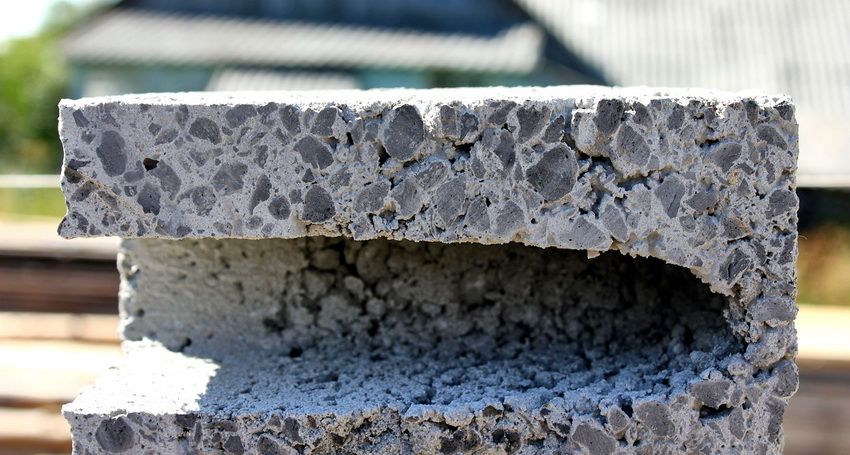
The cost of the material depends on its type, shape, as well as on the composition and impurities. It is cheaper to purchase blocks at the factory than from dealers. Intermediaries also regulate prices in different regions. The cost of a standard unit at the plant is an average of 36 rubles – and 20 rubles per half block. The margin from dealers reaches 15-18 rubles apiece.
When buying clay blocks, you need to find out such a nuance as delivery. It should be clarified whether its suppliers provide or need to organize the export independently. It is important to take into account the number of purchased blocks, as individual plants release material only in large batches. Therefore, if you need a small amount of material, you will have to use the services of dealers.
Helpful advice! From the correct choice of blocks depends not only the efficiency of the building and its strength, but also the total cost of materials.
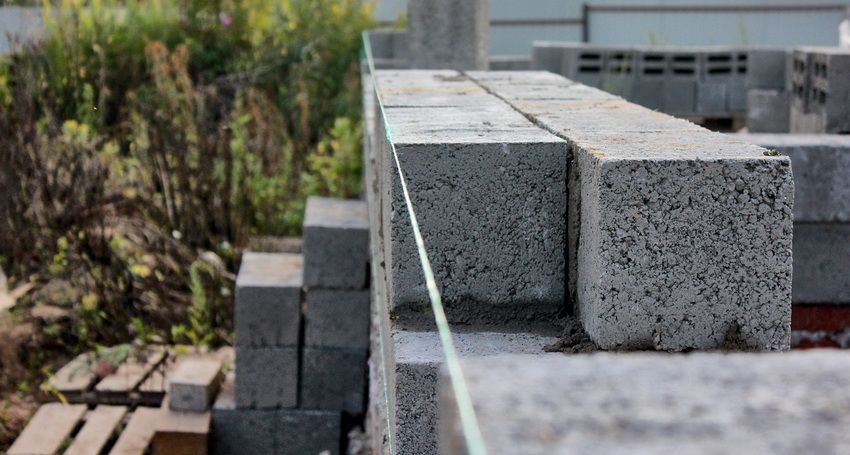
The most profitable option to buy expanded clay – directly from the manufacturer. The exclusion of intermediaries from the trade chain allows you to save up to 25% on a bag of material. This is due to the fact that organizations involved in the sale include in the cost the costs of transportation, storage, rental of premises, labor of movers and sales agents, etc. In addition, resellers of products make a premium taking into account economic risks.
Thus, choosing claydite as a heater, you should trust well-established manufacturers and their distributors in the construction market. If we are talking about large volumes, it is better to purchase the material in bulk. However, during long-term transportation and the absence of storage conditions, it is recommended to give expanded clay gravel or rubble in bags. In case of doubts in your own abilities, it is better to entrust the whole process to experienced specialists.
